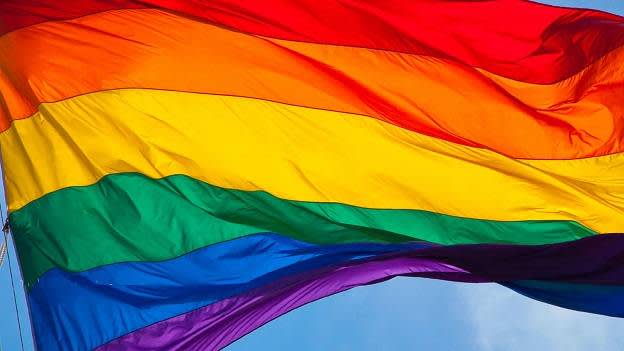Cost of the Closet: LGBT inclusion remains a focus area for HR

In 2011- a couple of years after the Delhi High Court decriminalized homosexuality, IBM hosted an intercompany meet of HR and Diversity leaders at their Bangalore office- with LGBT inclusion being the focus of discussion. As a legal expert spoke about the implications of the High Court ruling, and diversity managers shared their experiences of tackling LGBT issues in the workplace, I could feel a palpable sense of urgency, a willingness to engage on this issue that I had never seen before in corporate India. It was clear that organizations could no longer afford to fall behind on a topic that had generated considerable public discourse. Nor could they ignore the fact that greater openness was allowing many of their own gay employees to start coming out- especially in sectors like IT and finance where even Indian companies work closely with Western clients that take LGBT inclusion very seriously.
Fast forward 2013, and the shock judgment from the Supreme Court overruling the earlier High Court verdict presented a dilemma to organizations that had already embarked on LGBT inclusion efforts. How would they reconcile their initiatives in this space to the changed legal scenario? Most organizations responded by continuing their LGBT programs internally, but taking a conscious call not to speak about it in the public sphere. A few rolled back even their internal efforts- a gay employee at a major investment bank mentioned that when the funding for their LGBT resource group was being cancelled, the reason given was the company’s negative experience of facing a frivolous lawsuit in another country which has similar anti-gay laws. But the most disappointing part was that the Supreme Court ruling discouraged other organizations from rolling out their own Diversity & Inclusion programs that would have helped foster an inclusive workplace for countless LGBT employees.
And the reason for businesses to undertake such initiatives is not difficult to see. An Indian workplace climate study on LGBT issues which I had been a part of, revealed that 82% gay professionals- whether out or closeted- consider a company’s Diversity policies a major factor before joining a new organization. Indeed, very early on in my own career I had made a conscious decision to avoid any organization that does not at least spell out a clear equal opportunity policy covering sexual orientation. Every LGBT candidate may not be as open as I am in asking that question in a job interview, but that doesn’t mean they are not attempting to figure out discreetly what your company’s HR polices are. And considering that approximately 5% of the population anywhere in the world is considered to be LGBT (Interesting new data from Japan suggests the number might be even higher in urban workforce and markets), that is definitely a considerable pool of talent which may jettison your company’s overtures to join a rival firm. And what happens once they join an organization? Research both in India and globally has shown how inclusive workplaces- where people can bring their whole selves to work without worrying about negative repercussions to their “coming out” leads to higher engagement, greater trust and stronger workplace relationships. In fact, an earlier Harris Interactive study showed that gay staff who are ‘out’ and supported are 20-30% more productive that those who are either closeted or lack support systems at the workplace.
Indeed, a little insight into workplace behavior reveals why something so personal like sexual orientation matters. “It’s a non-issue”, I have been told. “Discussing sexual orientation at work- that’s not something we do, or even need to do!” But is that really so? Even without spelling it out, are straight people not “out” about their heterosexuality when they discuss their husbands and wives and boyfriends and girlfriends over casual lunch table conversations at work? But when gay men and women do the same thing, it becomes as issue. They are being “too open” about their homosexuality. Is that not a double standard? Now imagine how life at office must be for closeted gay employees who spend so much of their valuable time and energy in trying to hide their true selves, in trying to keep up the charade of their double lives. Even a seemingly innocuous question like “What did you do over the weekend?” can lead to yet another episode of sustained emotional stress. Is that really what we want our employees to be worrying about on a Monday morning?
But it doesn’t always have to be that way. We don’t need to continue paying the cost of such double standards in the form of disengagement, reduced trust and higher attrition. And that is why organizations that truly value diversity and inclusion do not shy away from difficult issues like LGBT inclusion- and remain steadfast in their efforts to foster inclusive workplaces despite the presence of adverse anti-gay laws. For instance, Goldman Sachs continues to run its Reverse Mentoring Program, providing managing directors the opportunity to learn directly from LGBT employees about their experiences in order to adapt their leadership approaches accordingly. Leading software company Intuit was similarly confronted with the Supreme Court ruling even as they were just planning to launch their LGBT inclusion program, but they made the choice to go ahead nonetheless after consulting legal experts and understanding that Section 377 only criminalizes a particular sexual act, it does not stop organizations from taking steps towards creating an LGBT inclusive workplace.
Here at Godrej as well, LGBT inclusion remains a focus area for our Diversity & Inclusion initiatives. By providing partnership benefits to same-sex partners, we have ensured that our commitment to providing equal opportunity is implemented in letter and spirit. Through forums like the Godrej India Culture Lab- a unique idea space that has hosted several LGBT-themed events in the past (most recently a performance by a transgender dance group in Mumbai), we provide avenues to have these key conversations. And this year as part of our engagement with the LGBT community we hosted the second edition of the Indian LGBT Youth Leadership Summit at our Mumbai campus, where more than 30 young leaders from various fields across India attended the annual two-day leadership program.
It is very difficult to track something like culture change, but over time- with sustained efforts like these, change does become both tangible and visible. A gay employee in one of our group companies who had been closeted for many years, and was going through his own personal struggle found confidence in the organization’s pro-active efforts. Today he is out to his team, and he recently shared with me what an incredible experience it was the day he registered his partner’s details with the HR department- something he had never imagined he could do here. And I feel that should be the objective of any organization’s LGBT inclusion effort- not to tell gay employees to come out (that they will do at their own pace) but to ensure a sense of confidence that when they do come out, they will be assured a welcoming and discrimination-free environment.
Recently, Radhika Piramal- MD of VIP industries spoke about her own experiences as an openly gay corporate leader in India at a panel discussion that we had organized at Godrej. She told the audience how after overcoming the initial trauma of being “outed” by a Mumbai tabloid, in the long run she realized that being openly gay allowed her to lead a more authentic and fulfilling life both at work and outside. Isn’t that what we wish for all our employees as well? In a homophobic society like ours, where LGBT people grow up with a fear of revealing their true identity, it often becomes the responsibility of the organization to take the first step towards building a sensitized and welcoming workplace for everyone irrespective of who they are.











